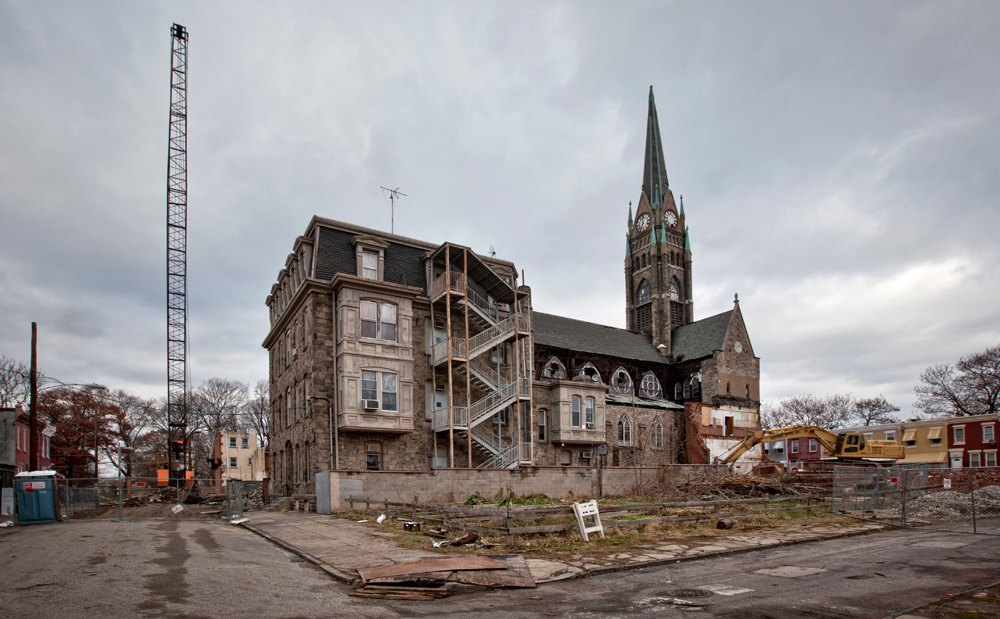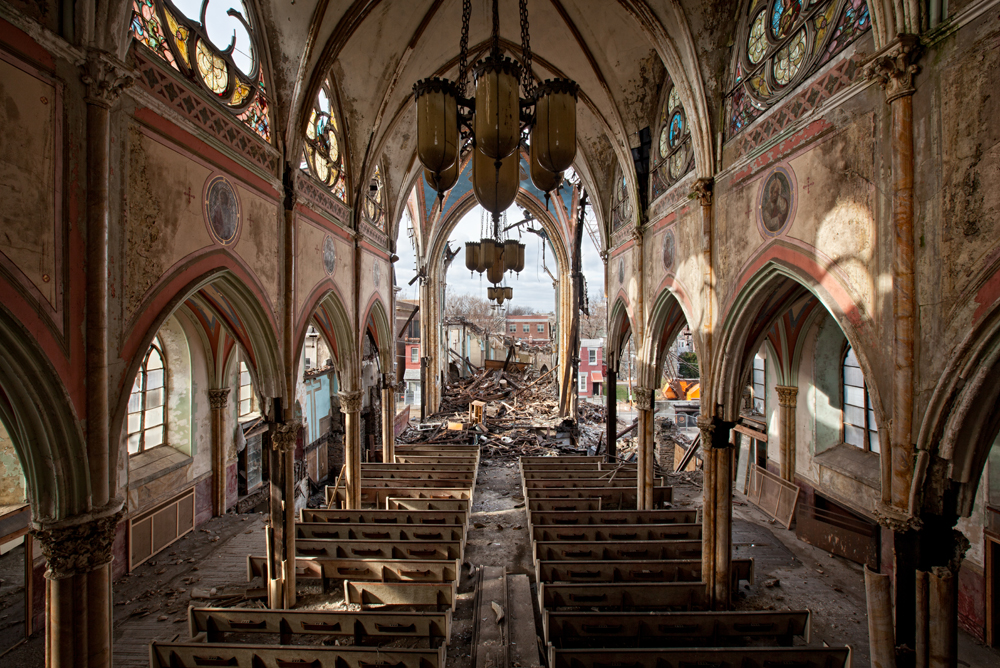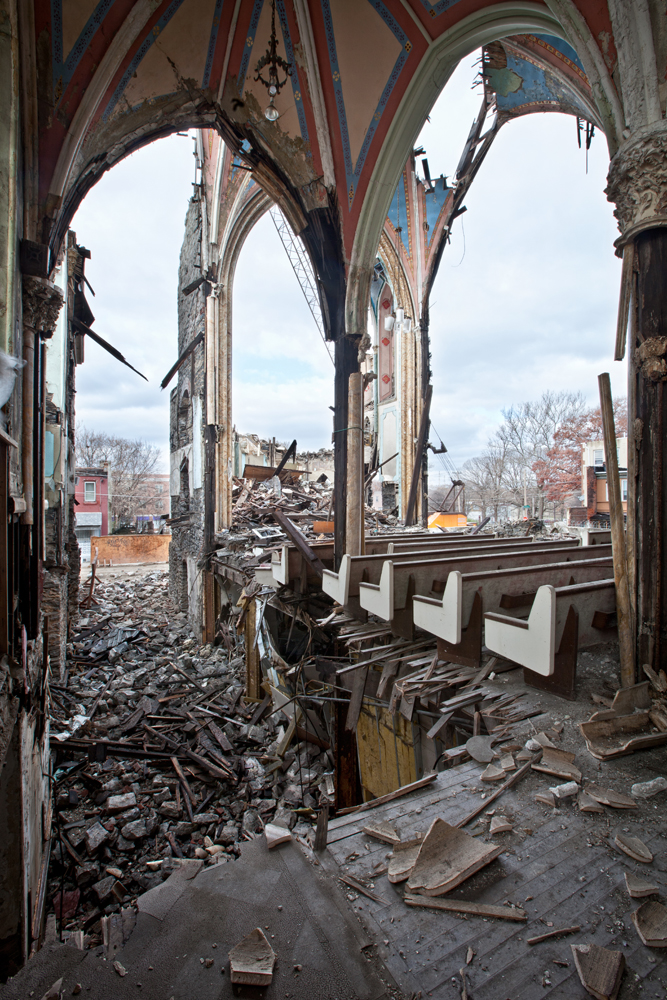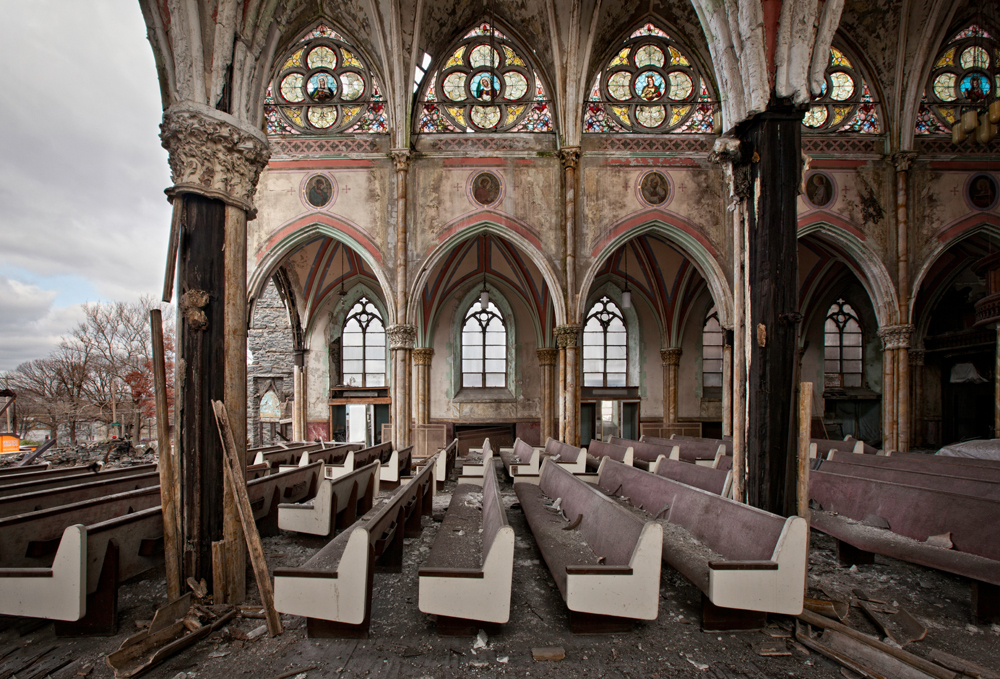
St. Bonaventure Roman Catholic Church in Philadelphia during demolition.




St. Bonaventure Roman Catholic Church in the Fairhill neighborhood of Philadelphia was designed in 1894 by Edwin Forrest Durang, who built over 100 ecclesiastical structures in a typically Roman Baroque style. Fairhill's large population of German Catholic immigrants were drawn there by the prospect of work at the industries in the area; some were also fleeing persecution of Catholics in Germany.
Named after a philosopher known as the "Seraphic Doctor", the Gothic church that would serve the parish took twelve years to complete. It was a difficult project that required perseverance, sacrifice, and hard work by members of the neighborhood, with many of the architectural features directly imported from Germany or created by German craftsmen in the area. Marble wainscoting, two story marbleized columns, and gold leaf stenciling adorned the interior, and the stained glass windows were produced by highly regarded companies in Philadelphia, Dusseldorf, and Austria. The eighteen story clock tower topped with a gilded cross was one of the most notable architectural features of the neighborhood.
After World War II many European settlers left the area, replaced by an African American populace relocating to the area in part because of redlining and a Puerto Rican population who came to work in area sugar, tobacco, and cigar companies. The industrial base of the area eroded significantly, taking a heavy toll on the area's economy. Violence and crime became major problems from the 1970s to 1990s, placing the church squarely within the area of Philadelphia known as "The Badlands." The church's first Spanish Mass was held in 1975; by the 1990s the German population had almost entirely moved to other areas.
St. Bonaventure was closed in 1993 along with many other north Philadelphia churches in lower income neighborhoods. It was sold to New Life Evangelistic Church, who left it vacant for years. During this period the copper roof was partially stripped and thieves stole windows, water pipes, and other items. In 2013 the Department of Licensing and Inspections (L&I) deemed the steeple in danger of collapsing after visiting it following complaints about slate shingles falling from the roof. While it was estimated to cost $77,000 to stabilize the steeple, L&I opted to spend approximately $1 million to tear down the most significant remaining building in the neighborhood.
I had tried for years without success to find a way to photograph the church. When I finally got there, most of the apse and transept had been shredded by a demolition company. It was a sickening sight. Regardless of one's beliefs, it is vital that we see places of worship for the artistry in their construction, and the irreplaceable collection of cultural and historical artifacts they frequently contain.
The destruction of a work of art is never something to revel in. The erasure of a beautiful cathedral like St. Bonaventure is a tragedy for everyone. It represents the worst and most wasteful theft of all, that in which something that was of incalculable value is taken and then senselessly destroyed.